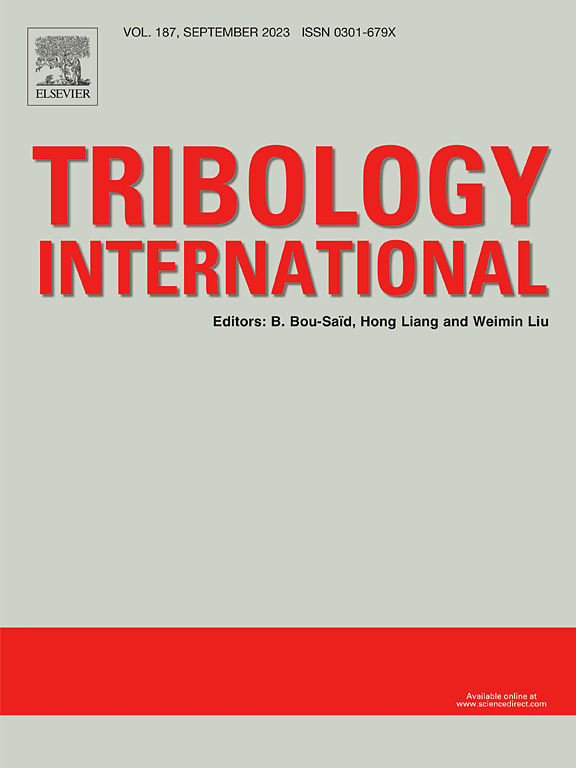Microstructure evolution and tribological properties of laser cladding Stellite6-Cu/Graphene composite coatings on TC4 alloy
IF 6.1
1区 工程技术
Q1 ENGINEERING, MECHANICAL
引用次数: 0
Abstract
There are still major limitations of their low hardness and insufficient wear resistance so far, although titanium alloys (TC4) are common materials used in key moving mechanical components. Hence, in this study, the Stellite6-Cu/Graphene coatings were prepared to employ laser cladding. The comprehensive characterization methods, such as XRD, SEM, XPS, and Raman spectrum analysis, were conducted to investigate the effect of adding graphene on the microstructure, microhardness, and tribological performances of samples. The main phase component of composite coating consisted of γ-Co solid solution, carbides (such as Cr23C6, Cr7C3, and TiC), and CuTix intermetallic compound, which were uniformly distributed into the interdendritic region and played a key role in realizing the grain refinement. This helped to greatly improve the strength and tribological performance of coatings. On a sliding tribo-pair system, the friction and wear properties of the substrate and coatings were studied, and the wear mechanisms of the samples were analyzed. The results indicate that in all composite coatings, the M2 composite coating with 1.2 wt% graphene achieved a twice increase in the microhardness compared with the raw substrate. The excellent lubrication effect of the graphene tribo-film resulted in significant reductions in friction (30 %) and wear (98 %) relative to the substrate under room temperature. At this temperature, slight adhesive wear and slight oxidative wear were the main worn mechanisms. Under a high temperature of 600 °C, the friction coefficient and wear rate were reduced by 55 % and 64 %, respectively, as compared to the substrate. This was mainly caused by the presence of oxidized tribo-film containing massive oxides and few graphene, with the mechanisms of slight abrasive wear and oxidative wear. This work is expected to provide certain data support for applying TC4 alloys in the wear-critical field.
求助全文
约1分钟内获得全文
求助全文
来源期刊

Tribology International
工程技术-工程:机械
CiteScore
10.10
自引率
16.10%
发文量
627
审稿时长
35 days
期刊介绍:
Tribology is the science of rubbing surfaces and contributes to every facet of our everyday life, from live cell friction to engine lubrication and seismology. As such tribology is truly multidisciplinary and this extraordinary breadth of scientific interest is reflected in the scope of Tribology International.
Tribology International seeks to publish original research papers of the highest scientific quality to provide an archival resource for scientists from all backgrounds. Written contributions are invited reporting experimental and modelling studies both in established areas of tribology and emerging fields. Scientific topics include the physics or chemistry of tribo-surfaces, bio-tribology, surface engineering and materials, contact mechanics, nano-tribology, lubricants and hydrodynamic lubrication.
 求助内容:
求助内容: 应助结果提醒方式:
应助结果提醒方式:


